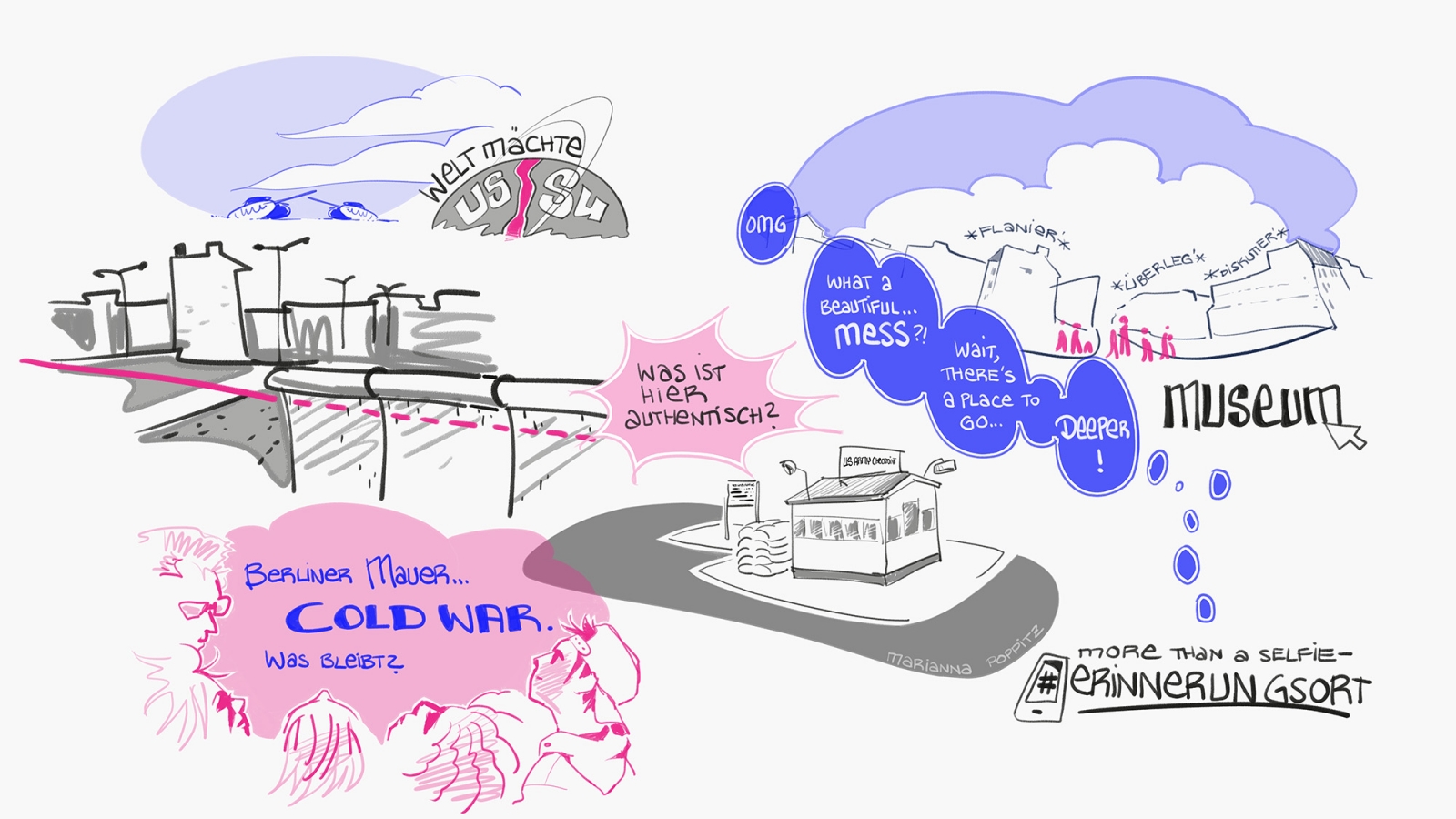Vision

In 2016, the Berlin Wall Foundation was entrusted with the task of preparing a new educational and commemorative site at the former Checkpoint Charlie. It will stand directly at the intersection of Friedrichstrasse and Zimmerstrasse and focus on the historical site and the Cold War as an international dimension of the Berlin Wall.
The story of Checkpoint Charlie
Checkpoint Charlie’s appeal goes back to the role it played in the Cold War. The site continues to attract visitors from all over the world. Many are familiar with the iconic photographs taken here in October 1961 when U.S. and Soviet tanks engaged in a menacing standoff. People often come to this site expecting to see the famous Berlin Wall. How will these expectations influence the redesign of the memorial site?
MAKING HISTORICAL TRACES VISIBLE
We want to explain the historical site: The history of the Allied checkpoint and the GDR border crossing will become tangible through (preserved and lost) traces of the past. We do not intend to use any historical replicas.
THE WALL’S INTERNATIONAL DIMENSION
We want to show the Cold War at this site as the international dimension of the Berlin Wall. Various integrative and inclusive methods will be used to present the history of the Cold War in its complexity and allow visitors to recognize its significance both for the present and the future. Using Checkpoint Charlie as a starting point, the presentation will introduce other Cold War sites around the world and connect local experiences to those of people from other countries.
PLACE FOR DIALOGUE & DEBATE
The Berlin Wall Foundation wants to create a place for open exchange and debate: A place for people from Germany and abroad, tourists, Berliners, young and old, to share with each other their memories and impressions of the Cold War, and its repercussions up to the present. In regard to urban planning, the site will be much more appealing than it is currently, offering visitors opportunities to linger and rest. Only then will people be able to engage with the site and its history. Its appeal could be reinforced by a museum building with innovative, eye-catching architecture that preserves as much open space as possible and incorporates the history of the site into its design.